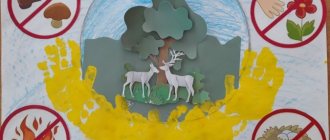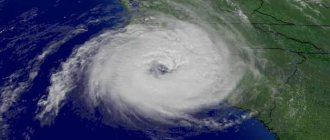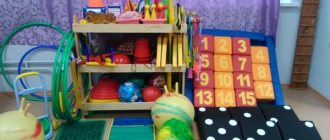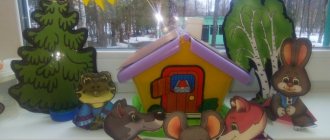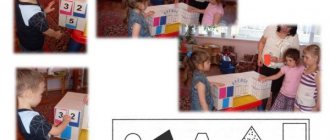Environmental education in the middle group
homeOur groups
Group No. 11 Smesharik
Environmental education
- this is the knowledge of the living things that surround the child, and our main task is to teach to protect and take care of what they see. Forming a humane attitude towards nature, it is necessary to proceed from the following: the main thing is for the child to understand that people and nature are interconnected, therefore caring for nature is caring for a person, his future. The impressions received in childhood from their native nature are very vivid, memorable for a lifetime and often influence on man's relationship to nature.
We consider the main goal of environmental education in preschool age to be the formation of a positive attitude towards nature, to educate environmentalists, to provide environmental knowledge, to teach children to be merciful, to love and take care of nature (land, water, air, flora, fauna), and to carefully manage its wealth.
To cultivate in children emotional responsiveness, the ability to see and understand the beauty of nature, and to develop aesthetic feelings.
Develop an interest in native nature, a desire to learn more about the characteristics of the native land, about the natural diversity of the country.
Our group does a lot of work on environmental education of children:
*
Thematic planning of direct educational activities;
*
Organization of joint activities (holidays, observations, work in nature);
* Reading fiction, looking at demonstration material, memorizing poems, proverbs, sayings.
* Play activity as the main form of children's activity;
*Involvement of museum employees in joint activities;
* Didactic, role-playing, outdoor games;
* Design of an exhibition of children's works and together with adults;
* Observation of the animal and plant world, and the work of adults.
* Ecology of health (breathing exercises, physical activity).
Environmental education of children in the group goes through all types of activities.
Open integrated lesson on the topic “Wild Animals of the Native Land”, teacher A.N. Vitske
OOD natural world "In the world of wild animals."
Classes
– “What autumn brought us”, “I take mushrooms and berries from a bear in the forest”, “Walking an ecological trail”, “Autumn gatherings”, “Duty in a corner of nature”, “Why did the Snow Maiden melt”, “A flock of bullfinches on the branches of a rowan tree” ", "Visiting a naturalist."
Lesson: “Inhabitant of the North – Bullfinch”
. Goal: to expand children's knowledge about the life of birds - the bullfinch, to introduce children to the diversity of bird behavior in accordance with the seasons.
Caring for plants is extremely important for the educational process; the life of living beings depends on it. In the process of labor, the child acquires new knowledge - plants need light, which they absorb with their leaves, they need not only water, but also air, they need to loosen the soil; they need to be transplanted into a new nutrient medium.
In a corner of nature, children, with the help of a teacher, regularly care for the plants: water the flowers, pick off withered leaves, loosen the ground with a stick, and wipe the dust from the leaves.
Taking into account the age characteristics of preschoolers, the environmental education of children in a group is built on a play-based basis, with a greater inclusion of different types of games. A variety of games with environmental content not only introduce the child to the world around them, but also help to form a system of social values focused on caring for nature .
In the process of environmental games, vocabulary is enriched: children learn the names of animals, birds, plants, insects, and learn to describe their appearance and characteristic features. Ecological games also contribute to the development of mathematical thinking.
We introduce the games “Earth, Water, Air”, the game “Fourth Extra”, the game “Chain”, the game “Tops-Roots”, d/i “Does this happen or not?”, “Living or inanimate nature”, “When does it happen?” happens”, “Who will reap the harvest faster”, the ecological game “Who has who?”.
A survey was conducted on the topic “What do you know about indoor plants.”
Human speech, enriched with proverbs, is always bright and expressive, attracts attention with its imagery - we memorize proverbs, sayings, and popular expressions about nature.
The staff of the Berezovsky Regional Museum of Local Lore successfully cooperates with our preschool institution. Natalya Arkadyevna Raudanen visited our kindergarten with an interesting, educational lesson “Catch, catch a fish!”
In a form accessible to preschoolers, Natalya Arkadyevna very interestingly and clearly told the children about the underwater world, fish from different bodies of water (sea, ocean, lake, river, stream, pond, aquarium).
In our work to familiarize ourselves with the outside world, we take into account the regional component (the nature of our native land, folk traditions).
The group has organized a play corner: here children play board-printed, role-playing, didactic and other educational environmental games. “Say it in one word”, “Logical chains” - developmental tasks.
The role of fairy tales in the education of preschool children is difficult to overestimate, and environmental fairy tales are interesting; thanks to fairy tales, children can be told in an accessible form about complex phenomena in nature, the relationship between nature and man, and the importance of human labor. “Visiting a fairy tale” - the game instills in children a caring attitude towards nature, makes them think about how people and nature are closely interconnected. In the process of dramatization games, children learn to imitate the movements of animals and evaluate the behavior of animals - fairy-tale characters.
We introduce children to the nature of their native land while reading fiction, S. T. Aksakov’s story “Stories about Native Nature”, reading A. Yashin’s “Feed the Birds in Winter”.
Verbal didactic games develop preschoolers’ perception and speech, as well as the ability to analyze and describe; they teach children to generalize phenomena and classify objects. “When does this happen?” “What is round in nature?”, “What is yellow in nature?”, “What is it?”, “Name it in one word.”
Musical holidays and entertainment on environmental themes have a strong impact on the emotional sphere of a child’s personality. Environmental exhibitions have been organized - “Colorful Autumn” - crafts made from natural materials, “Beautiful Christmas Tree” - crafts made from waste materials. We hold exhibitions of joint drawings - posters, photographs on the theme “Me and nature" we involve parents in making feeders.
The group had conversations with children on the topic: “Help the birds in winter,” domestic and wild animals in the forest. When working with children, we use folklore works of small forms, solve riddles, observe the behavior of birds, and introduce folk signs.
Exhibition of books by E. Charushin and animals.
On walks, we learn to notice changes in the appearance of trees depending on the time of year, and we reinforce ideas about seasonal changes in nature.
A program for the environmental circle “The World Around Us” has been developed.
Opening of the exhibition “Journey into Ecology” - awards ceremony for the participants of the preschool educational institution.
The Mylnikov family was awarded a certificate for participation. Korikova N.E. – awarded a certificate for participation in the exhibition, 2nd place.
We use non-traditional forms and methods in our work - multimedia presentations, slides, environmental fairy tales.
Consultations: “Cultivating a love for nature”, “Ecological education of children in the family”.
Creating an individual folder “Introducing a child to nature” - working with parents.
Environmental education of preschoolers can be considered as a process of continuous education and education of parents, aimed at developing an environmental culture of all family members. We especially pay attention to the joint activities of children and parents, since it is through activity that a person influences the world around him. In addition, it promotes cooperation, emotional, psychological rapprochement between the child and the adult.
Prospects for environmental education in the group:
Raise the level of environmental culture and consider environmental education of preschool children a priority and an important link in the system of continuous environmental education in collaboration with parents.
Replenish the pedagogical piggy bank with new information: make a card index of walks, a card index of didactic games, compile notes on educational activities.
MBDOU teacher
kindergarten "Korablik"
middle group "Smeshariki"
Korikova N.E.
Environmental education of middle preschool children
Elena Tsebenko
Environmental education of middle preschool children
Environmental education of middle preschool children.
Tsebenko Elena Ivanovna MKDOU d. from 401 Novosibirsk
Environmental education of middle preschool children
Nowadays, the problem of environmental education has come to the fore and is receiving more and more attention.
Why has this problem become relevant? The reason is human activity in nature, often illiterate and incorrect from an environmental point of view , wasteful, leading to a disruption of the ecological balance .
Each of those who brought and are causing harm to nature was once a child. of preschool institutions in the environmental education of children , starting from an early age , is so great .
Our task is to show parents the need to instill an environmental culture in their children .
“ ecological culture ” include?
?
Ecological culture is knowledge, practical skills, aesthetic experiences, emotional attitude and practical actions and behavior of children (empathy, sympathy, interest and desire to help nature, the ability to admire its beauty, etc.)
The main task of getting to know the environment in a preschool educational institution is to form in children a holistic perception and understanding of various objects and phenomena of the surrounding reality.
Classes to familiarize yourself with the environment include familiarization with the phenomena of social life; familiarization with the objective world created by man; familiarization with the phenomena of living and inanimate nature.
During classes, children to a certain type of properties, connections and relationships, specific to each of the four main areas of pedagogical work highlighted in the program: “Human”
,
“Objective world”
,
“Living nature”
,
“Inanimate nature”
.
Preschool childhood is the initial stage of personality formation and its value orientation in the world around us. At this age , the child develops a positive attitude towards nature, himself and the people around him.
Fostering a caring attitude towards the natural environment in middle-aged children begins in the family and continues to develop in the preschool years in kindergarten .
The goal of environmental education is the formation of a new type of person with new ecological thinking , capable of realizing the consequences of their actions in relation to the environment and able to live in relative harmony with nature.
Elementary environmental knowledge acquired by children at a young age environmental subjects ; it is necessary to form an environmental culture of preschoolers in kindergarten from the moment children in the first junior group.
Despite the visual-figurative nature of the thinking of preschoolers , we consider it necessary to acquaint them not only with the visible and tangible connections and relationships that exist in nature, but also with the hidden causes of natural phenomena. It is important to give the child not only the joyful surprise of a naturalist, but also to introduce him to the inquisitive analysis of a naturalist.
The process of developing a consciously correct attitude towards nature is accompanied by certain forms of child behavior, which can serve as a criterion for assessing the level of his environmental education . These are independent observations, experiments, questions, the desire to talk about experiences and impressions, to translate them into reality (reflect them in a game, in an art activity, care for animals and plants, etc.). (parents and teachers) should help them with this.
.
Children of middle preschool age have a very developed cognitive interest, in particular in nature. It is at this age that they perceive the world as a whole , which contributes to the formation of an ecological culture . It is very important to maintain this cognitive interest.
The content of the formation of the principles of environmental education should be scientific. It should contribute to the formation in children of a holistic perception of the world around them , on the one hand, and the interconnections of the parts of this whole, on the other.
, skills, and value relations in the field of environmental appropriate for preschool age in the family, kindergarten, through the media , observations, and reading fiction. The influence of the family on the formation of the beginnings ecological culture is determined by the attitude of its members to the surrounding nature and the general culture of the family members.
The formation of an ecological culture in a kindergarten involves the development of the child’s aesthetic and ethical feelings, which evoke joyful communication with nature, individual for each child, and have different emotional shades, positive or negative. With positive emotions, an awareness of the value of nature, its beauty, an aesthetic attitude towards it is formed, and the spiritual enrichment of the child’s personality occurs.
When organizing and conducting observations in nature in kindergarten, the following positions are important: the presence of natural objects; determining the content of observation; children in them .
Depending on the object and the age of the children, observations can be episodic, lasting several minutes (observation of a snowflake in the palm of your hand; observation of frost, the behavior of birds at the feeder; on a frosty day, listen to the creaking of snow; admire how the snow glistens in sunny weather; the melting of icicles; for a spring thunderstorm;) and long-term ones, which last for many days and sometimes weeks (for the behavior of fish in an aquarium; for snow; for the awakening and growth of plants; for buds on trees; for changes in the color of leaves; for a dandelion).
Long-term observations are valuable in that they allow us to capture the sequence in the occurrence of natural phenomena, their visible connection, which is accessible to the visual perception of a preschool child .
There is an opinion that in environmental education knowledge is not so important, and the main emphasis is on instilling a caring attitude towards nature and developing working skills in natural conditions. Of course, children’s emotional attitude towards natural objects , familiarity with a number of animals and plants, and caring for them play a big role in the formation of environmentally literate ideas about the environment . However, this is not enough: children need a minimum of environmental knowledge that will help them understand the need to behave environmentally competently . The combination of an emotional attitude towards nature and knowledge about it will give a much greater effect. It is necessary to combine the spiritual and intellectual development of the child wisely, taking into account the psychological and physiological characteristics. It should be noted that many teachers in the learning process draw children's , first of all, to living objects, especially animals. Very little attention is paid to objects of inanimate nature. At the same time, it is known that children a great interest in objects of inanimate nature, and with the correct organization of work (conducting experiments, observations)
The child easily acquires knowledge about inanimate nature and its connection with living nature.
Children should understand the reasons for the need to preserve all species of animals and plants without exception. They must be taught not to pick beautiful flowers, because these flowers can also disappear due to disturbance of their habitat. It is important that children understand the need to preserve all living organisms on Earth. The teacher should not use the words “harmful, useful”
.
Ecological knowledge becomes the basis of environmental education .
The child develops a certain system of values, an idea of man as a part of nature, of the dependence of his life and his health on its condition. It is also important to cultivate an understanding of the need for reasonable consumption. Environmental education is also associated with the development of a child’s emotions, the ability to sympathize, be surprised, empathize, take care of living organisms, perceive them as fellow creatures in nature, and be able to see the beauty of the world around them. The child should develop an active position, a desire to change something around him for the better. The teacher must make the children feel that even their feasible, seemingly insignificant, actions determine what the world around them will be like. The child must also understand his responsibility for the state of the environment . It is also important to involve children in practical activities: in the courtyard of the kindergarten and throughout the premises, at home, during excursions. children to communicate with nature during the formation of the principles of ecological culture can be satisfied by specially organized observation in kindergarten. Its essence lies in the sensory knowledge of natural objects, through various forms of perception - visual , auditory, tactile. Thus, I realized that children show great interest in natural objects and easily learn a variety of information if it attracts them. The main aspects of a teacher’s work with children are a variety of activities, an integrated approach to teaching, which contributes to the formation of not only an environmentally literate , but also a comprehensively developed person. teacher is one of the figures in the pedagogical process, including environmental education . Being a bearer of ecological culture , mastering the methods of environmental education , he organizes children’s activities so that they are meaningful, emotionally rich, contribute to the formation of practical skills and necessary ideas about nature, and gradually turn into independent behavior of children . The leading role in this process should be the joint activity of an adult and a child.
The main place in the system of environmental education should be given to activities through which all living things within the child’s field of vision develop normally (grow, give birth, bloom, etc.)
.
This activity is nothing more than the creation and maintenance of conditions for plants and animals located in various “ ecological spaces ” of the preschool institution .
Creating a stationary ecological and developmental environment in a kindergarten is a continuous pedagogical process, which includes the organization of group nature corners, a room or nature office, a greenhouse, etc., and the daily maintenance of conditions necessary for the full life of all living beings. Such constant activity teaches you to think and systematically and really take care of your “little brothers”
who share the same living space with children.
This activity becomes a method only if it is included in the pedagogical process and is performed together with adults and children. Teachers who do everything themselves and do not give preschoolers to observe and participate in creating normal conditions for the inhabitants of living corners develop in children indifference, callousness and inattention in general to life as a unique value. Joint organizational and economic activities, labor activities in the green area of the kindergarten, growing plants, caring for adults and animals and their offspring can take different forms and take place with varying degrees of participation, both adults and children . Preschoolers can become participants in this activity in three ways:
- by listening to the teacher’s about various activities and events in the preschool educational institution;
- observing the activities of adults;
- practically participating in it.
Whatever forms the joint activity of adults and preschoolers , the greatest importance in it is the teacher’s to the object of the activity, which is manifested in his interested story, emotional reactions, assessments, explanations and actions that are correct from an environmental point of view. An adult, by his behavior, creates a model of interaction with nature, a caring attitude towards it, demonstrates the necessity and significance of everything that happens in front of children . Joint activities can be carried out in any “ ecological space ”
indoors and on the site of the kindergarten. Its most common form is the creation and maintenance of the necessary conditions for the inhabitants of a group nature corner in a kindergarten.
Kindergarten is the first link in the system of continuous environmental education , so it is no coincidence that teachers are faced with the task of forming the foundations of a culture of rational environmental management among preschoolers .
How to recognize a plant. Ecology lesson in the middle group of kindergarten
Lesson on ecology
in the middle group of kindergarten on the topic “How to recognize a plant” Objectives:
To generalize children’s ideas about the typical morphology of plants (bush, tree, flower).
Reinforce the concept of “living and non-living”. Objectives:
- Develop mental operations: comparison and generalization, interest in all living things around us.
— Strengthen the ability to distinguish and name parts of plants (root, stem, trunk, branches, leaves, seeds). — To form children’s ideas about the needs of plants (heat, light, moisture, soil) and skills: the ability to listen carefully, complement and correct mistakes. — Foster a caring attitude towards plants. Vocabulary work:
develop children's evidentiary speech.
Activation of the dictionary: consolidate the names of plant parts - root, stem, trunk, leaves, seeds, cones, needles. Activate words in speech: plant, bush, tree, flower, soil, light, heat, water. Previous work:
- Examination of illustrations: tree, bush, flower and their comparison;
— Examining trees and bushes while walking, highlighting parts of plants; — Didactic game “Living and Nonliving”; — Observing a houseplant (reaches for the light). Planting onions in water, in soil. Conducting experiments with a bulb to determine the dependence of its growth on changes in environmental conditions (with water - without water, in light - without light). — Monitoring changes in branches added to the group. Materials and equipment:
illustrations (tree - pine, bush - lilac).
A set of plot pictures “Where plants grow.” Audio recording of the music “Light Breeze” and “How Beautiful This World” is. Artificial flower – narcissus. Large cut pictures: tree, bush, flower. Folder. Toy - Why. Progress of the lesson: A toy appears in the group - Why. Pochemuchka:
Hello, guys.
Educator:
Hello, Pochemuchka.
What a beautiful envelope you have. The guys and I want to know what you brought in it? Why:
I brought pictures about nature.
Would you like to see? Children:
Yes, we want. Pochemuchka takes out a picture of a pine tree.
Educator:
Guys, what is this?
Children:
This is a pine tree, a plant.
Educator:
How did you know this?
Children:
Pine trees have long needles and cones.
Educator:
Why does a pine tree need cones and needles?
Children:
Seeds are hidden in cones, and the tree breathes through its needles.
Educator:
What else does pine have?
Children:
Trunk, branches, root.
Educator:
Why does a tree need a trunk?
Why do you need a barrel? Children:
Branches grow on the trunk.
The root feeds the tree. Educator:
Does a tree need to move around in search of food?
Children:
No, it has no legs, it feeds on roots from the ground.
Educator:
Why, do you know where living pines come from?
Why:
Dads do them at work.
Educator:
Guys, is Pochemuchka right?
Children:
No
Educator:
Is it possible to make a living tree?
Children:
No.
Educator:
Where do living trees come from?
Children:
Grow from seeds.
Why:
Now I will know that plants grow from seeds. You recognized my first picture, but you definitely won’t guess the other one. He takes out an illustration of a lilac from a folder.
Educator:
Guys, what is this?
Children:
Lilac bush.
Why:
No, it's a tree.
Educator:
Let's not argue, put the pictures next to each other and compare them.
What do trees and lilacs have in common? Children:
Root, branches, leaves.
Educator:
How are they different?
Children:
The lilac has several trunks - it’s a bush, there are beautiful flowers.
Educator:
Do you hear, Pochemuchka, the guys say that a tree has only one trunk - tall, large, and a bush has several thin trunks.
Why:
Guys, you know so much, help me plant this flower, I forgot what it’s called.
Children:
This is a narcissist.
It won't grow because it's plastic. Educator:
What flowers can grow and bloom?
Children:
Alive.
Physical education lesson:
The teacher turns on the recording of the wind.
Educator:
Do you hear magical music?
Now I am turning the girls into a light breeze, they will run lightly, on their toes, and I will turn the boys into trees, the branches stretch towards the sun and sway slightly, the legs do not move, the roots sit firmly in the ground. And now the girls turn into trees, and the boys become the breeze. Now the breeze has died down. Everyone turns back into guys. 1, 2, 3, 4, 5 - became kids again. The first days of spring have arrived. You and I will go for a walk. Here are our clearings. And they have cards on them. And the pictures are not simple, but the pictures are cut. Whoever collects them quickly will name them. Children play the game “Collect the picture.” Educator:
What grew in this clearing?
Children: Tree. Educator:
What grew in your clearing?
Children: Bush with berries. Educator:
Who can name him?
Children: Blackberry. Educator:
What have you grown?
Children: Flower. Educator:
Why, do you like our clearings?
Pochemuchka:
Yes, I really like it.
Well done boys! Educator:
Now do you understand what plants are?
Pochemuchka:
Yes, whatever is big is the plant.
Children: Plants are different, large and small. Why:
Those who have small, round leaves are plants?
Children: Leaves are different, small and large, round and oval, smooth and shaggy. Why:
Plants are what grow in the forest?
Children: Not only in the forest. Educator:
The guys will now tell you where plants can grow.
Children: In the garden, in the vegetable garden, on the street, at home in pots. Calm music sounds. Educator:
Why, we’ll teach you how to play pretend.
Sit down comfortably, imagine that you are a plant. Bush, tree or flower. What can plants think about? What do they want? Who have you become? Child: I am an oak tree. Educator:
What are you thinking about?
Child: I don't have enough land. Educator:
How can you help an oak tree?
Children: Cover the roots with soil. Thus, the teacher asks several children. The music is turned off. Educator:
Guys, what do flowers need in order for them to be strong, healthy, and blooming?
Go out and select pictures. What flowers need to live. Working with model cards. Why:
Thank you, guys. You are true experts on nature, I learned a lot from you. I will definitely tell my friends that plants need to be treated with care and taken care of.
